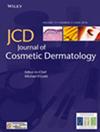Analysis of Common Treatment Drugs and Allergen Sensitization in Hair Loss Patients
Abstract
Background
Hair loss significantly impacts an individual's appearance, self-confidence, quality of life, and social competitiveness. Over 250 million people in China suffer from hair loss, accounting for 18% of the population. To ensure the safe selection of topical hair products for hair loss patients, reduce the risks of allergies and irritation, and improve clinical efficacy and adherence, we developed a hair patch test based on clinical needs.
Objective
In this study, we explored the allergic situation of hair diseases through the test of patch products, which provided a strong basis for clinical personalized treatment.
Methods
We designed a hair patch test to screen for allergens that are highly associated with hair diseases. The experiment is based on screening of haptens and drugs commonly encountered by hair and scalp, covering hair dyes, scalp care products, and therapeutic drugs. The research subjects are patients diagnosed with hair related diseases (such as androgenetic alopecia, alopecia areata, etc.), ensuring that the samples are targeted. The allergen patch is fixed on the surface of the skin, with a contact time of 48 h, followed by recording and evaluating local skin reactions within 72 h. The experiment aims to identify allergens that may cause or exacerbate hair diseases, providing a basis for the etiology research and treatment of related diseases.
Results
Common allergens in daily hair care products include dodecyl polyglucoside (10.2% positivity rate) and Balsam of Peru (8.67% positivity rate). Cobalt chloride (56.63% positivity rate) and nickel sulfate (32.65% positivity rate) were prevalent metal semiallergens. The positive rates of 5% minoxidil liniment were 22.96%, and the positive rate of 5% minoxidil tincture was 27.04%, indicating significant sensitization potential. Lowering minoxidil liniment concentration to 2% reduced positivity to 4.08%. The positive rate of Hasonide solution mixed with 5% minoxidil tincture was 16.33%, while Hasinide solution and 5% minoxidil liniment were not positive, suggesting that the addition of both Hasonide solution could reduce the sensitization of 5% minoxidil tincture and minoxidil liniment.
Conclusion
The increasing prevalence of hair disorders necessitates personalized treatment approaches. This study demonstrated the utility of patch testing with hair care products to investigate allergenic reactions, offering robust evidence for tailored clinical interventions. Future research should refine patch testing methodologies to better simulate real-world conditions and conduct larger-scale studies to optimize therapeutic strategies.


 求助内容:
求助内容: 应助结果提醒方式:
应助结果提醒方式:


